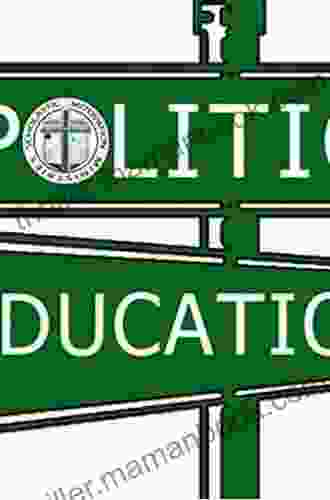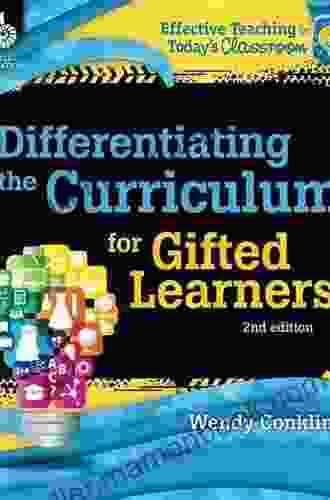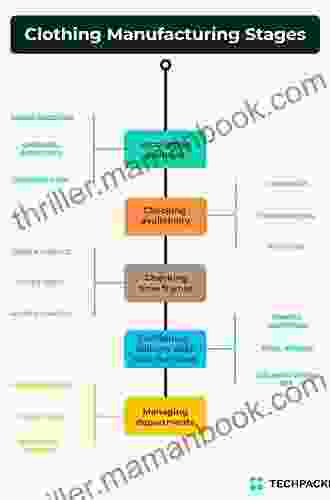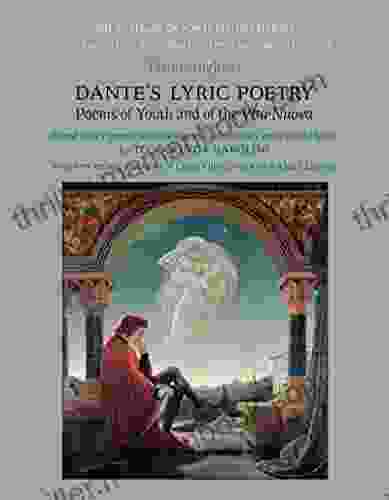The Origins and Evolution of No Child Left Behind: American Institutions and Education Reform

The No Child Left Behind Act (NCLB) was a major piece of legislation enacted in 2002 that has had a significant impact on American education. The law was designed to address concerns about the achievement gap between white students and students of color, and to improve the overall quality of education in the United States. NCLB has been a controversial law, with supporters arguing that it has led to increased accountability and higher standards in schools, while critics contend that it has been too punitive and has led to a narrowing of the curriculum.
4.4 out of 5
| Language | : | English |
| File size | : | 834 KB |
| Text-to-Speech | : | Enabled |
| Screen Reader | : | Supported |
| Enhanced typesetting | : | Enabled |
| Word Wise | : | Enabled |
| Print length | : | 263 pages |
The Historical Context of NCLB
The No Child Left Behind Act was enacted in the wake of a growing concern about the achievement gap between white students and students of color. In 2002, the National Assessment of Educational Progress (NAEP) found that the achievement gap between black and white students had widened in reading and math. This finding was particularly troubling because it came at a time when the overall performance of American students on international tests was declining.
In addition to concerns about the achievement gap, there was also a growing sense that the American education system was not preparing students for the 21st century workforce. A 2001 report by the National Center for Education Statistics found that only 35% of high school graduates were proficient in math and 37% were proficient in reading.
.
The Key Provisions of NCLB
The No Child Left Behind Act was designed to address the concerns about the achievement gap and the quality of American education. The law includes a number of key provisions, including:
- Annual testing: All students in grades 3-8 are required to take annual tests in reading and math. The results of these tests are used to measure student progress and to identify schools that are not making adequate yearly progress (AYP) toward meeting state standards.
- AYP: Schools that do not make AYP for two consecutive years are subject to a number of sanctions, including being required to offer tutoring and supplemental services to students, and being replaced by a charter school.
- Teacher quality: NCLB includes a number of provisions designed to improve teacher quality, such as requiring teachers to be highly qualified and to participate in professional development activities.
- Parental involvement: NCLB includes a number of provisions designed to increase parental involvement in their children's education, such as requiring schools to provide parents with information about their children's progress and to hold regular parent-teacher conferences.
The Impact of NCLB
The No Child Left Behind Act has had a significant impact on American education. The law has led to increased accountability and higher standards in schools, and has helped to close the achievement gap between white students and students of color. However, NCLB has also been criticized for being too punitive and for leading to a narrowing of the curriculum.
One of the most significant impacts of NCLB has been the increase in standardized testing. Prior to the enactment of NCLB, many states only tested students once or twice during their elementary and secondary education. NCLB requires states to test students annually in grades 3-8, and some states have also adopted annual testing in high school. This increase in testing has led to concerns about teaching to the test and narrowing the curriculum.
NCLB has also been criticized for being too punitive. Schools that do not make AYP for two consecutive years are subject to a number of sanctions, including being required to offer tutoring and supplemental services to students, and being replaced by a charter school. Critics argue that these sanctions are too harsh and that they can lead to a focus on short-term test scores at the expense of long-term learning.
The Ongoing Debates about NCLB
The No Child Left Behind Act has been a controversial law since its enactment. Supporters argue that it has led to increased accountability and higher standards in schools, and has helped to close the achievement gap between white students and students of color. Critics contend that it has been too punitive and has led to a narrowing of the curriculum.
The debate about NCLB is likely to continue for years to come. The law is up for reauthorization in 2023, and it is unclear whether it will be renewed in its current form. However, it is clear that NCLB has had a significant impact on American education, and its legacy will be debated for years to come.
4.4 out of 5
| Language | : | English |
| File size | : | 834 KB |
| Text-to-Speech | : | Enabled |
| Screen Reader | : | Supported |
| Enhanced typesetting | : | Enabled |
| Word Wise | : | Enabled |
| Print length | : | 263 pages |
Do you want to contribute by writing guest posts on this blog?
Please contact us and send us a resume of previous articles that you have written.
 Top Book
Top Book Novel
Novel Fiction
Fiction Nonfiction
Nonfiction Literature
Literature Paperback
Paperback Hardcover
Hardcover E-book
E-book Audiobook
Audiobook Bestseller
Bestseller Classic
Classic Mystery
Mystery Thriller
Thriller Romance
Romance Fantasy
Fantasy Science Fiction
Science Fiction Biography
Biography Memoir
Memoir Autobiography
Autobiography Poetry
Poetry Drama
Drama Historical Fiction
Historical Fiction Self-help
Self-help Young Adult
Young Adult Childrens Books
Childrens Books Graphic Novel
Graphic Novel Anthology
Anthology Series
Series Encyclopedia
Encyclopedia Reference
Reference Guidebook
Guidebook Textbook
Textbook Workbook
Workbook Journal
Journal Diary
Diary Manuscript
Manuscript Folio
Folio Pulp Fiction
Pulp Fiction Short Stories
Short Stories Fairy Tales
Fairy Tales Fables
Fables Mythology
Mythology Philosophy
Philosophy Religion
Religion Spirituality
Spirituality Essays
Essays Critique
Critique Commentary
Commentary Glossary
Glossary Bibliography
Bibliography Index
Index Table of Contents
Table of Contents Preface
Preface Introduction
Introduction Foreword
Foreword Afterword
Afterword Appendices
Appendices Annotations
Annotations Footnotes
Footnotes Epilogue
Epilogue Prologue
Prologue Rebecca Elson
Rebecca Elson Neetha Naidu
Neetha Naidu Richard Appignanesi
Richard Appignanesi Thrity Umrigar
Thrity Umrigar E H De La Espriella
E H De La Espriella Webster Young
Webster Young David Taransaud
David Taransaud Travis Lett
Travis Lett Floss Craig
Floss Craig Pratikshya Mishra
Pratikshya Mishra Jd Kirk
Jd Kirk Pia Nilsson
Pia Nilsson Tony Le Tissier
Tony Le Tissier Helen E Fisher
Helen E Fisher Christopher G Nuttall
Christopher G Nuttall John Elder Robison
John Elder Robison Kim Stanley Robinson
Kim Stanley Robinson John E Douglas
John E Douglas Jayaprakash Satyamurthy
Jayaprakash Satyamurthy Edd Kimber
Edd Kimber
Light bulbAdvertise smarter! Our strategic ad space ensures maximum exposure. Reserve your spot today!

 Guillermo BlairUnderstanding the Scrum Concept in Project Management: A Comprehensive Guide
Guillermo BlairUnderstanding the Scrum Concept in Project Management: A Comprehensive Guide
 Reed MitchellThe Argonautica Illustrated: A Timeless Tale of Adventure, Courage, and the...
Reed MitchellThe Argonautica Illustrated: A Timeless Tale of Adventure, Courage, and the... Jeremy MitchellFollow ·12.9k
Jeremy MitchellFollow ·12.9k Barry BryantFollow ·4.1k
Barry BryantFollow ·4.1k Alfred RossFollow ·13k
Alfred RossFollow ·13k Salman RushdieFollow ·6.3k
Salman RushdieFollow ·6.3k Jay SimmonsFollow ·14.7k
Jay SimmonsFollow ·14.7k Avery SimmonsFollow ·2.9k
Avery SimmonsFollow ·2.9k Ira CoxFollow ·8.8k
Ira CoxFollow ·8.8k Osamu DazaiFollow ·3.2k
Osamu DazaiFollow ·3.2k

 Caleb Carter
Caleb CarterThe Complete Beagle Dog Beginners Guide: Beagle Facts,...
Beagles are...

 Gage Hayes
Gage HayesThe Origins and Evolution of No Child Left Behind:...
The No Child Left Behind...

 George Martin
George MartinThe Love Pirates: A Swashbuckling Tale of Love,...
The Love Pirates is a thrilling...

 Nathaniel Hawthorne
Nathaniel HawthorneDifferentiating the Curriculum for Gifted Learners:...
Gifted learners are...

 Carlos Fuentes
Carlos FuentesThe Years of Rice and Salt: A Journey Through a Forgotten...
The Years of Rice and Salt is...

 Herbert Cox
Herbert CoxThe Intricate Design of Clothing Manufacturing Processes:...
The clothing industry is a vast and...
4.4 out of 5
| Language | : | English |
| File size | : | 834 KB |
| Text-to-Speech | : | Enabled |
| Screen Reader | : | Supported |
| Enhanced typesetting | : | Enabled |
| Word Wise | : | Enabled |
| Print length | : | 263 pages |







